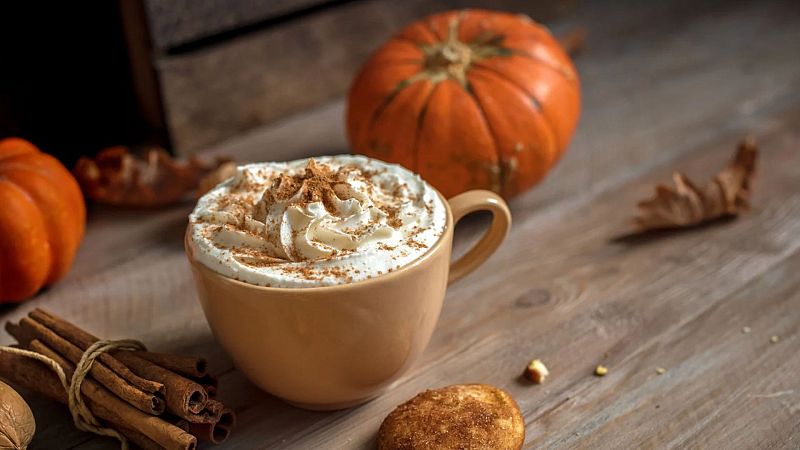
The sun continues to shine brightly, the summer break is not yet finished, but autumn has already made its presence known — at least in the form of a cup.
Starbucks officially introduced its Pumpkin Spice Latte this week, signaling the unofficial arrival of autumn on coffee shop menus. Since it first appeared in 2003, the Pumpkin Spice Latte (commonly referred to as the PSL) has grown into a major commercial success, with hundreds of millions sold and a whole pumpkin-spice industry emerging as a result.
Rivals quickly jumped on the bandwagon: Dunkin’ launched its own pumpkin beverages in 2007, while McDonald’s introduced its own PSL in 2013.
But what accounts for our long-lasting fascination with this drink?
The flavour chemistry
The main components of the beverage include espresso, pumpkin spice flavor syrup, heated milk, garnished with whipped cream and a mix of spices such as cinnamon, ginger, nutmeg, and cloves. Beneath this flavor is a special mix of chemical substances that not only provide taste but also create physical experiences.
"The blend of spices used in pumpkin spice is truly remarkable," noted Dr. Steve Talcott, a food chemistry professor at Texas A&M University.
We possess these amazing natural substances such as cloves. There is a compound known as eugenol, which is a terpene. It provides a cooling effect, creating a refreshing sensation in your mouth. Therefore, you experience a warm feeling throughout your body while your mouth feels cooled down.
Cinnamon contains cinnamaldehyde, offering a spicy flavor that feels both comforting and fitting for the season. Nutmeg offers myristicin, which brings a sweet, earthy richness, while ginger contains gingerols, substances that stimulate the same receptors as chili peppers, adding a gentle warmth to the latte.
Nostalgia in a cup
The attraction is not only chemical - it's mental. Our sense of smell is directly connected to the brain's regions responsible for memory and emotions. When we smell cinnamon, nutmeg, or clove, the brain quickly brings back memories of autumn festivals, family events, and warm kitchens.
Neuroscientists refer to this phenomenon as the "Proust effect" - where scents trigger especially vivid emotional recollections.
This sentimental attraction is heightened by its rarity: the PSL is only available for a short period annually. Time-limited exclusivity stimulates the brain's reward system, increasing the drink's appeal.
"If you consider ordering a pumpkin spice latte during the autumn season, it might signify a unique event for you," remarked Talcott.
"Enjoying a fresh pumpkin pie or homemade cinnamon rolls can bring back a sense of nostalgia. It's a very comforting scent. It's a very soothing flavor," he added.
Benefits to health (and mixed warnings)
Apart from flavor and memory, the spices also offer an unexpected array of health advantages.
There are numerous polyphenols," Talcott mentioned. "These substances act as natural antioxidants, along with terpenes, which are flavor compounds that also offer recognized health advantages.
"Thus, these health advantages might be found in areas such as heart health, reducing inflammation, and even enhancing our mental well-being," he added.
Cinnamon, cloves, and ginger are known to help decrease inflammation, support digestive health, and provide antioxidant benefits.
"You might experience a slight increase in serotonin after having a latte with pumpkin spice, as it activates all the neurons in your brain and provides significant mental stimulation alongside the caffeine in coffee," Talcott mentioned.
Although there are advantages, it is crucial to emphasize that the PSL should not be viewed as a "health drink." A grande-sized cup from Starbucks has approximately 390 calories and 50 grams of sugar—more than a can of Coca-Cola and almost 13 teaspoons of sugar.
Although they are very tasty, it's advised that PSLs are best savored as a rare seasonal indulgence – although for a short period each year, who really keeps track?
